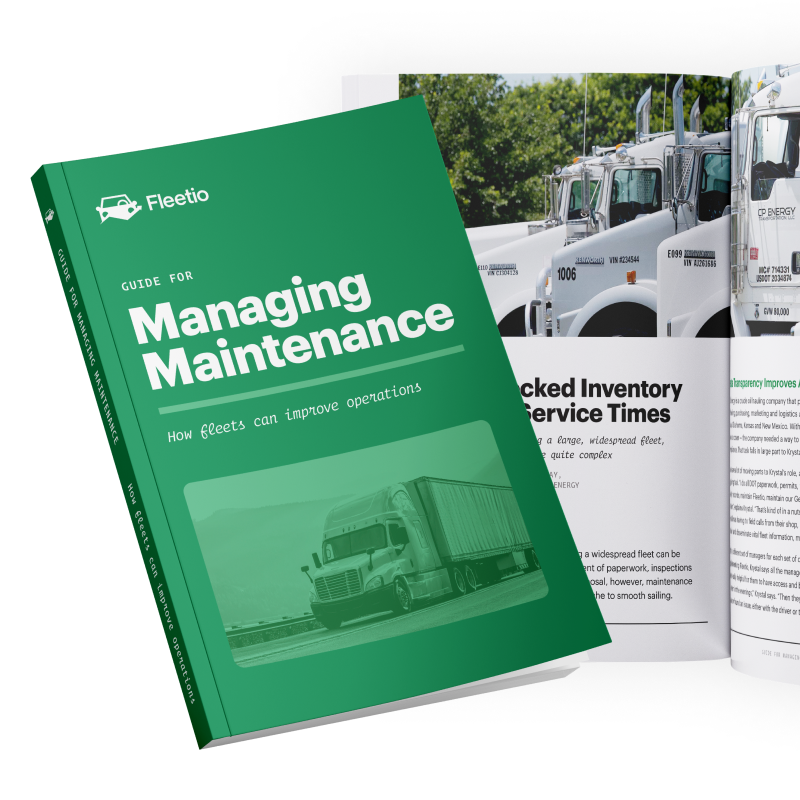Quarterly Wrap-up
The news cycle tends to speed by at a hard rate to keep up with, so we’ve compiled a monthly wrap-up highlighting current global, economic, policy and industry news that could impact fleet operations, whether via budget and planning, maintenance and replacement schedules or workload and profitability.
Jul 5, 2025
7 min read

Content overview
The Q2 2025 Wrap-up covers FMCSA compliance updates, EV charging and cybersecurity tech, and key policy and economic factors influencing fleet costs. Learn what’s changed and how to stay ahead.
Welcome to the Quarterly Wrap-up, a series consolidating some of the top news that could impact fleet operations. Knowing what’s going on — and what’s potentially on the horizon — can help fleets better prepare for operational disruptions and challenges to keep things running as smoothly as possible. But, because the news cycle races by, it can be hard to keep up with — and who can find the time, am I right? That’s why the Quarterly Wrap-up delivers short-and-sweet reporting with links you can take a deep dive into at your convenience. Enjoy!
Jump to a topic
Fleet Industry News 🚛
Trucking compliance shake-up
The FMCSA’s 2025 deregulatory agenda is aimed at a sort of… administrative streamlining, but not at the expense of safety-critical communication. Key updates include eliminating MC numbers — consolidating operating authority under DOT numbers to simplify carrier registration — along with digitizing medical certification by reducing the need for drivers to carry physical documents. At the same time, the agency reaffirmed the importance of English language proficiency, clarifying that all commercial drivers must be able to read road signs, communicate with officials and complete required paperwork. These updates aim to reduce compliance burdens while maintaining safety standards across a diversifying driver population.
Construction fleets face margin compression
Following an April rebound fueled by early-season housing and manufacturing gains, the U.S. construction sector cooled in June 2025 as commercial and infrastructure projects lagged behind residential and industrial builds, amid rising material costs, funding delays and tighter lending conditions.
Technology News 🖥️
Plug & Charge could be a valuable tool
The universal “Plug & Charge” protocol is transforming fleet EV operations by streamlining the charging process through automatic vehicle identification, authentication and billing the moment an asset is plugged in — no apps, RFID cards or manual input required. For fleets managing multiple drivers, assets and locations, this eliminates the risk of billing errors and unauthorized charging. It also simplifies energy reconciliation by linking charging sessions directly to specific assets and cost centers, improving expense tracking and compliance. As the standard, based on ISO 15118, becomes more widely supported across networks and OEMs, Plug & Charge will enable fleets to charge seamlessly at various public and depot stations, reducing administrative overhead and boosting uptime.
The AI of it all
As fleets increasingly integrate telematics, AI cameras, ELDs and EVs, cybersecurity and OTA resilience have emerged as mission-critical priorities. Per Work Truck, the National Motor Freight Traffic Association (NMFTA) 2025 Trucking Cybersecurity Trends Report warned that fleets are now facing “AI-enhanced phishing attacks,” growing threats to IoT devices and the “rise of Zero-Trust security models,” all highlighting that connected assets are prime cyber targets.
Master your maintence domain
Every fleet has its challenges — but the best managers are prepared for them. This guide is your playbook: real-world lessons, expert strategies and proven techniques to cut downtime and tighten up your operation.
Get the guidePolicy News ✍️
New law could improve wildfire response times
The Aerial Firefighting Enhancement Act of 2025, which passed in June, strengthens wildfire response by expanding the use of retired military aircraft for aerial water and retardant drops, which can significantly benefit businesses reliant on fleet vehicles and equipment. Faster fire containment reduces risk to assets, limits route disruptions and minimizes downtime for operations near wildfire-prone areas. It may also lead to more stable insurance rates, improved supply chain reliability and lower emergency relocation costs.
Emissions rules under review
In Q2 2025, the regulatory climate shifted toward deregulation, offering short-term relief for fleet operators. The EPA began reconsidering strict Phase 3 heavy-duty truck emissions rules, citing cost burdens on the industry. Meanwhile, Congress passed a resolution to revoke California’s ability to enforce zero-emission truck mandates, though its legality remains under review. Nationally, efforts to reverse the previous administration’s tailpipe emissions rules for light- and medium-duty vehicles failed after the Senate ruled they required 60 votes.
Economy News 💰
The economy is doing economy things
In Q2 2025, several economic developments posed challenges for fleet operations. The U.S. implemented sweeping new tariffs in April, including a 10% blanket rate and sector-specific hikes on steel and automobiles. At the same time, the Federal Reserve held interest rates steady at 4.25-4.50% amid sluggish GDP growth and weakening job gains, though some policymakers, like Governor Waller, advocated for near-term cuts to support the economy. Economic growth slowed to around 1-1.4%, dampening freight demand and curbing investment, while inflation remained elevated, raising concerns about fuel and maintenance cost volatility.
Fuel volatility exposes cost vulnerabilities
Between April and June 2025, the U.S. national average fuel prices experienced modest but telling fluctuations, shaped by geopolitical developments and seasonal travel demand. Regular gasoline hovered between $3.11 and $3.16 per gallon, with the price on June 30 recorded at $3.164, according to data from the U.S. Energy Information Administration (EIC) — down $0.366 year-over-year. After surging earlier in the spring due to escalated Middle East tensions, prices began to level out in June following a cease-fire, with analysts noting that relief at the pump was driven by stabilizing oil markets and robust domestic refinery output. Diesel prices showed a similar trend, ending June at $3.727 per gallon, reflecting a year-over-year decline of $0.068. Analysts projected continued downward momentum into July, with the national average gas price potentially dropping below $3.00 per gallon later in the summer, contingent on ongoing global stability and a quiet hurricane season.
7 habits fleet managers shouldn’t break
Managing a fleet means herding a hundred moving parts — but the most effective managers don’t just keep up, they lead with intention. Discover a framework built to help you focus, prioritize and perform like a pro.
See all 7 habits
Senior Fleet Content Specialist
As a Senior Fleet Content Specialist at Fleetio, Rachael Plant uses her near decade of industry experience to craft practical content aimed at helping fleet professionals tackle everyday challenges with confidence.
LinkedIn|View articles by Rachael PlantReady to get started?
Join thousands of satisfied customers using Fleetio
Questions? Call us at 1-800-975-5304

